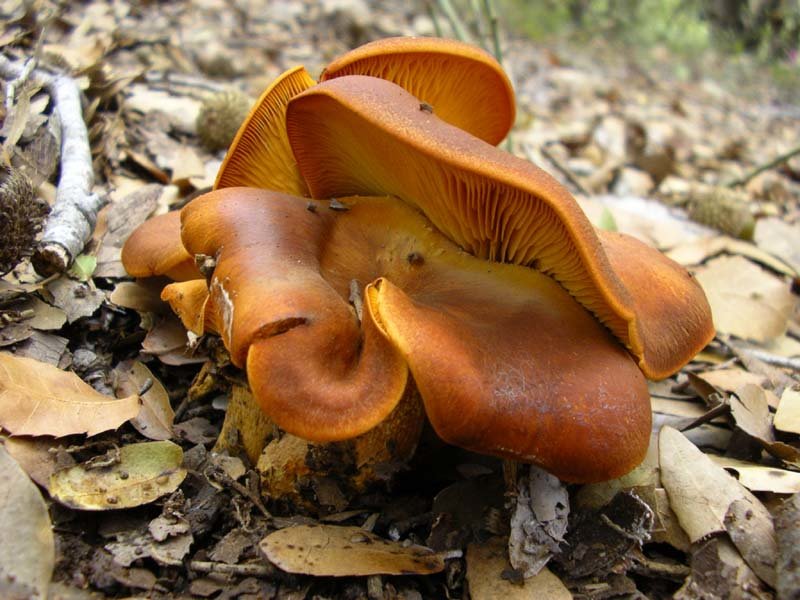Omphalotus oilseed (Omphalotus olearius)
- Division: Basidiomycota (Basidiomycetes)
- Subdivision: Agaricomycotina (Agaricomycetes)
- Class: Agaricomycetes (Agaricomycetes)
- Subclass: Agaricomycetidae (Agaricomycetes)
- Order: Agaricales (Agaric or Lamellar)
- Family: Omphalotaceae (Omphalotaceae)
- Genus: Omphalotus
- Type: Omphalotus olearius (Omphalotus oilseed)

Omphalote olive – a species of agaric fungi from the Negniuchnikov family (Marasmiaceae).
Omphalote olive hat:
mushroom cap is quite dense and fleshy. In a young mushroom, the cap has a convex shape, then becomes prostrate. In a fully mature mushroom, the cap, depressed in the central part, is even slightly funnel-shaped with strongly folded edges. In the center there is a noticeable tubercle. The skin of the cap is shiny, smooth with thin radial veins. Hat diameter from 8 to 14 centimeters. The surface is orange-yellow, reddish-yellow or yellowish-brown. Ripe mushrooms, in dry weather, become brown with wavy, cracking edges.
Leg:
a high, strong stem of the fungus is covered with longitudinal grooves. At the base of the leg is pointed. In relation to the hat, the stem is slightly eccentric. Sometimes located in the center of the cap. The leg is dense, the same color as the hat or slightly lighter.
Records:
frequent, interspersed with a large number of short plates, wide, often branched, descending along the stem. It happens that a slight glow comes from the plates in the dark. The plates are colored yellowish or orange-yellow.
Omphalote olive pulp:
fibrous, dense pulp, yellowish color. The flesh is slightly darker at the base. It has an unpleasant odor and almost no taste.
Disputes:
smooth, transparent, spherical. Spore powder also has no color.
Variability:
The color of the cap can vary from yellow-orange to dark reddish-brown. Often the hat is covered with dark spots of various shapes. Mushrooms growing in olives are completely red-brown. Leg of the same color with a hat. Plates, golden, yellow with a slight or intense shade of orange. The flesh may have light or dark spots.
Spread:
Omphalothus oleifera grows in colonies on the stumps of olives and other deciduous trees. Found in low mountains and plains. Fruits from summer to late autumn. In olive and oak groves, fruiting from October to February.
Edibility:
The mushroom is poisonous but not fatal. Its use leads to severe gastrointestinal disorders. Symptoms of poisoning appear about a couple of hours after eating mushrooms. The main signs of poisoning are nausea, headache, dizziness, convulsions, colic, diarrhea and vomiting.









